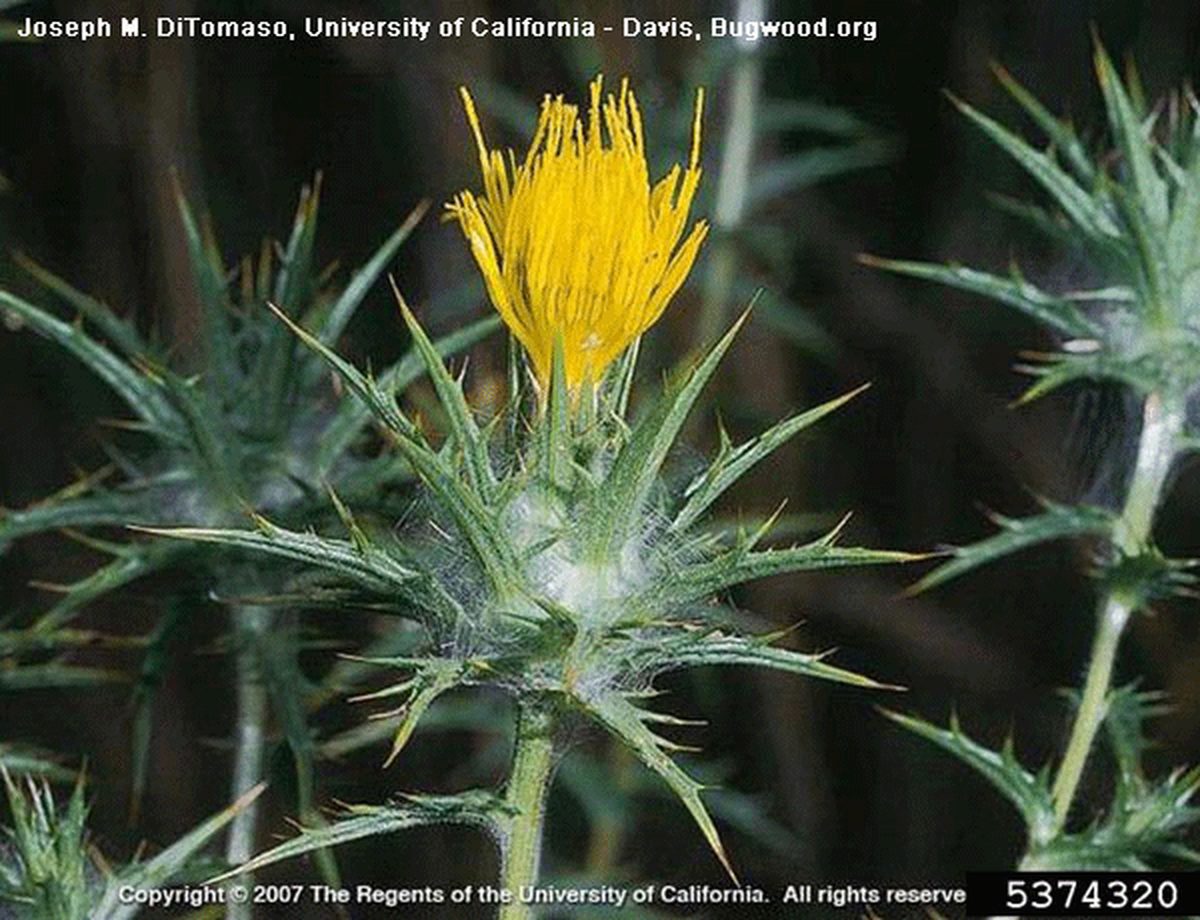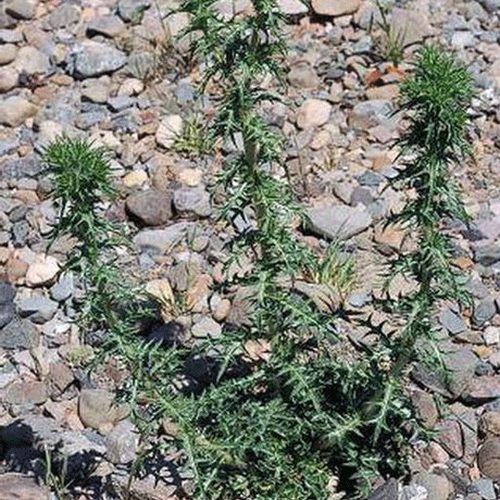Woolly Distaff Thistle
Carthamus lanatus

Family: Asteraceae
Other Common Names: false starthistle, saffron thistle, woolly safflower
Weed class: monitor list
Year Listed: 1991
Native to: Asia, Europe and Northern Africa
Is this Weed Toxic?:
not known to be
Why Is It a Noxious Weed?
This plant is on the monitor list. Please contact the Washington State Noxious Weed Control Board to report locations or for more information.
How would I identify it?
General Description
Woolly distaff thistle is an erect annual that grows up to 3.3 feet tall and has a long, slender taproot.
Flower Description
Flowerheads of woolly distaff thistle are solitary, at stem tips and composed of many yellow flowers. Bracts at the base of flowerheads are spine-tipped. Flowerheads are mostly 25-35 mm long.
Leaf description
Plants begin as a rosette of leaves that often wither by when its in flower. Stem leaves are alternate, sessile (without petioles), stiff and spreading outward to slightly curved downward and pinnately lobed. Leaf lobes spine-tipped.
Stem description
Stems more branched in the upper two-thirds of plant.
Fruit Seed Description
Achenes are broader at the tip than the base and have a lateral notch near the base. Color varys from buff to brown and may have dark brown mottling. Achenes from the outer part of the flowerheads are rough and may lack a pappus. Inner achenes are smoother and have a papus of narrow, unequal brownish scales. The pappus is mostly 10-13 mm long.
May Be Confused With
May be confused with smooth distaff thistle, Carthamus baeticus in Oregon. Smooth distaff thistle has not been documented in Washington.
Where does it grow?
Plants grow in open disturbed areas including roadsides, agricultural land, fields and pastures.
How Does it Reproduce?
Woolly distaff thistle reproduces by seed.
How Do I Control It?
Manual hoeing and cutting can be effective when the plant is cut about an inch or lower below the soil surface, and done before the plant has started to flower. Mowing will encourage further growth. Grazing by livestock is not ideal, due to how spiny the plant can be. Herbicide is the most effective if done at the rosette stage.
For More Information
Oregon Department of Agriculture's woolly distaff thistle noxious weed information





